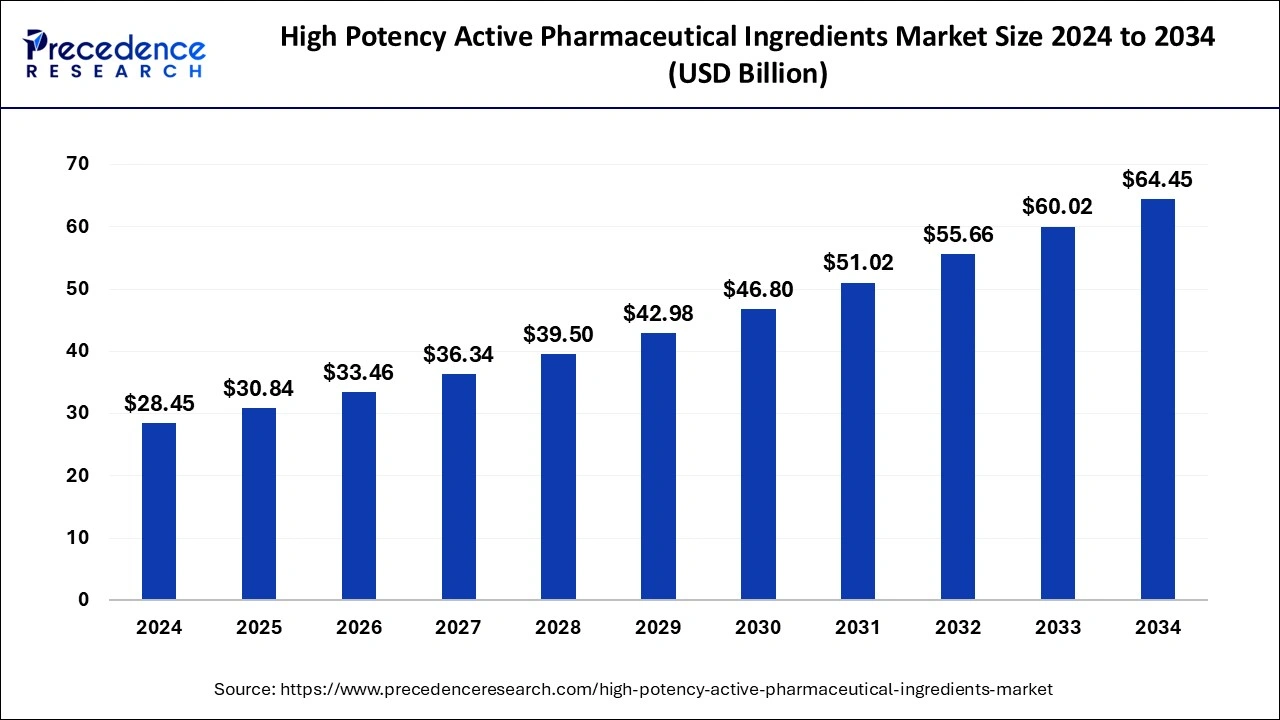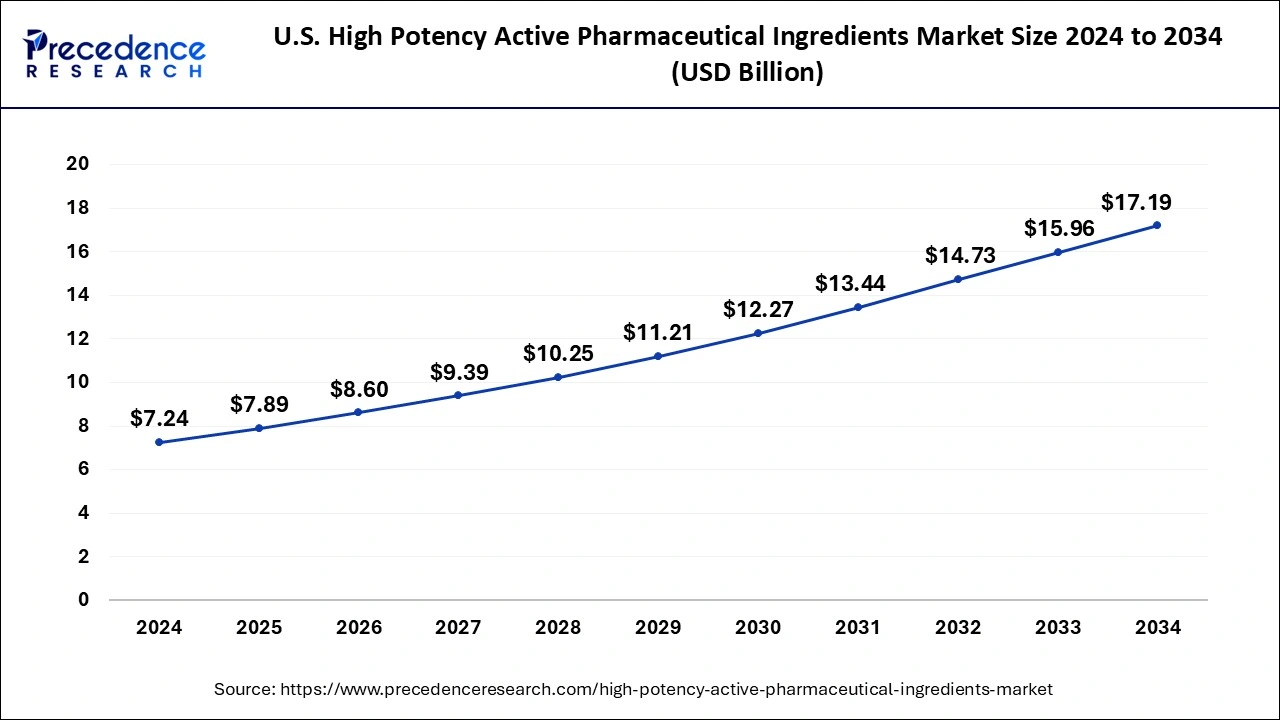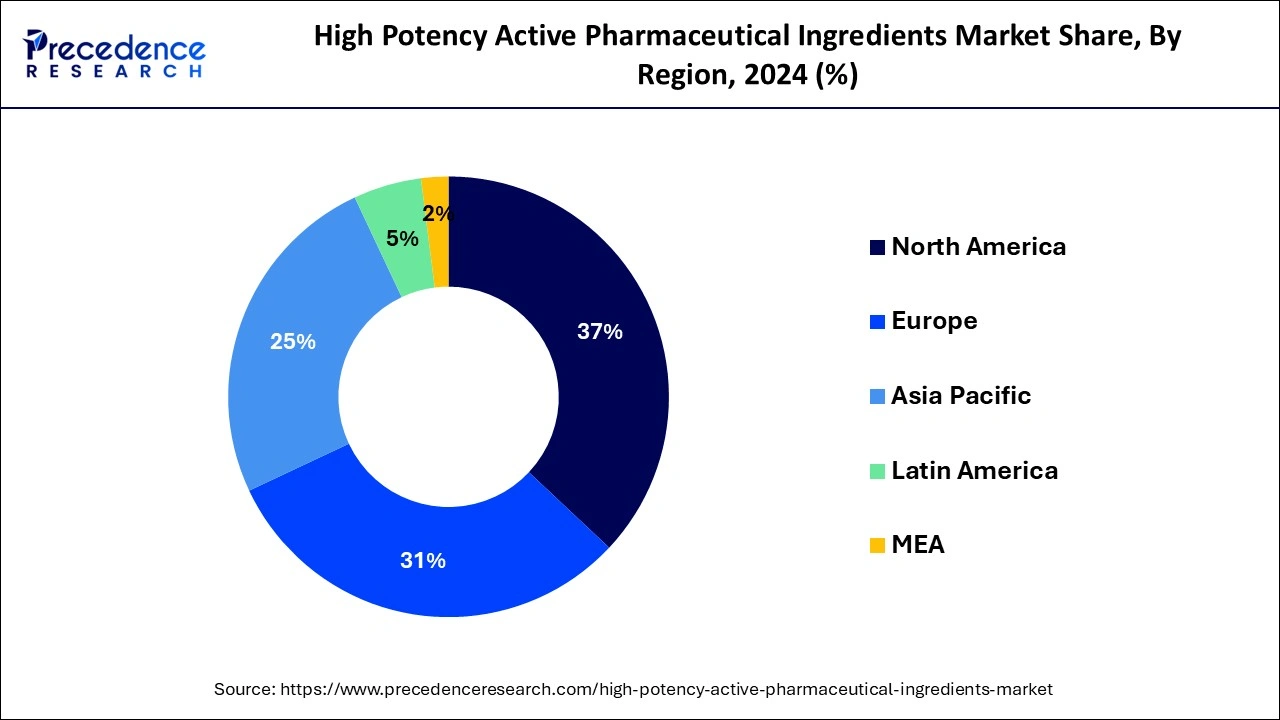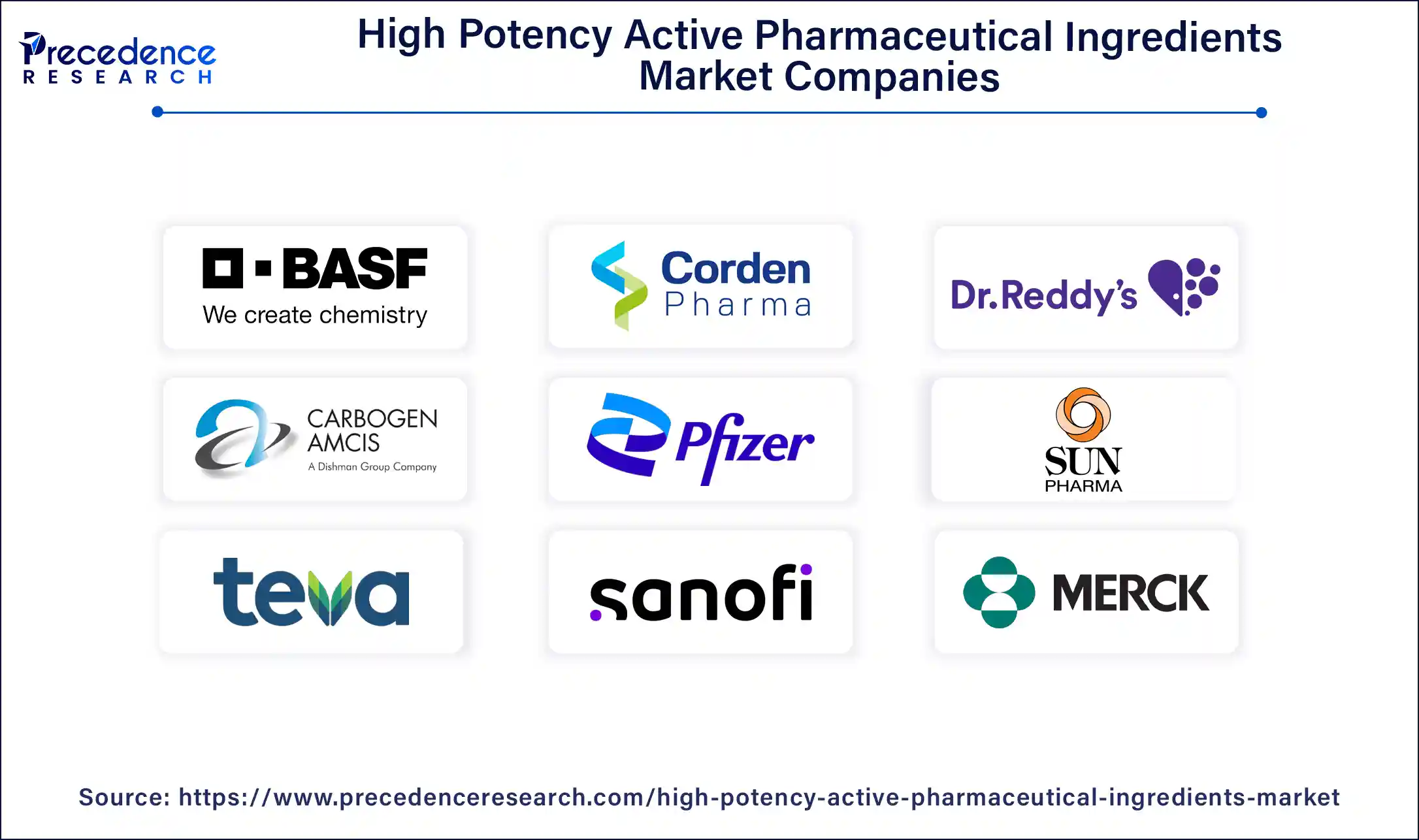September 2024
The global high potency active pharmaceutical ingredients market size is calculated at USD 30.84 billion in 2025 and is forecasted to reach around USD 64.45 billion by 2034, accelerating at a CAGR of 8.52% from 2025 to 2034. The North America high potency active pharmaceutical ingredients market size surpassed USD 10.53 billion in 2024 and is expanding at a CAGR of 8.55% during the forecast period. The market sizing and forecasts are revenue-based (USD Million/Billion), with 2024 as the base year.
The global high potency active pharmaceutical ingredients market size was exhibited at USD 28.45 billion in 2024 and is estimated to surpass around USD 64.45 billion by 2034, expanding at a CAGR of 8.52% during the forecast period 2025 to 2034. The rise in demand for better therapeutics is driving the high potency active pharmaceutical ingredients market.

By using sophisticated algorithms and predictive analytics to find areas for resource efficiency, AI-enabled modeling provides a solution. The foundation of a good HPAPI production process is efficiency. Machine learning and other AI-driven technologies provide real-time process optimization for manufacturing. AI systems find trends, spot irregularities, and recommend changes to improve production quality and efficiency by continually evaluating production data. When coupled with dynamic reinforcement learning optimization, this results in shorter cycle times, higher yields, and better-quality products. In the end, it comes down to optimizing output while upholding strict quality and regulatory requirements, which AI's adaptable skills enable.
The U.S. high potency active pharmaceutical ingredients market size reached USD 7.24 billion in 2024 and is anticipated to reach around USD 17.19 billion by 2034, poised to grow at a CAGR of 9.03% from 2025 to 2034.

North America is anticipated to dominate the market with revenue share of 37% in 2024. When it comes to the prevalence of diseases like cancer and neurological illnesses, the U.S. was the most impacted nation in the entire world. The region's output of HPAPIs is rising as a result of the rising prevalence of these illnesses. In several therapeutic, drug-discovery, or other research investigations pertaining to oncology and other serious conditions, HPAPIs are frequently used. As a result of the region's growing patient population relative to other nations, the demand for the same will be considerably larger in North America.

Growing elderly population as well as the rising prevalence and incidence of infectious diseases in this region, North America is anticipated to account for a sizable portion of the market for high-potency APIs and HPAPIs. Incidence rates for chronic conditions like cancer are similarly high in the US. The Parkinson's Foundation estimates that approximately 1 million Americans have Parkinson's disease, which is more than the combined number of people with muscular dystrophy, multiple sclerosis, and amyotrophic lateral sclerosis. By 2032, this number is projected to rise to 1.2 million.
Asia Pacific is estimated to grow at the fastest CAGR in the high potency active pharmaceutical ingredients market during the forecast period, propelled by the growing pharmaceutical industry in nations such as China and India. Advanced therapies are in high demand due to the region's large population and increased prevalence of chronic illnesses. Market expansion is also supported by government programs to improve healthcare infrastructure and attract international investment. Additionally, Asia Pacific is a desirable location for HPAPI production due to its trained labor and cost-effective manufacturing capabilities.
Over the past few decades, the Indian pharmaceutical sector has grown and now accounts for around 1.72% of the country's GDP. It is projected that the Indian pharmaceutical business will reach $65 billion by 2024 and $130 billion by 2030. The rising need for reasonably priced, high-quality medications both locally and abroad is what is causing this increase. At the moment, India ranks third globally in terms of volume and fourteenth globally in terms of value. With an 8% market share in the global API industry, India ranks third in terms of API production. India produces more than 500 distinct APIs, accounting for 57% of the APIs on the WHO prequalified list. Over the first four years, the Indian API market is expected to grow at a compound annual growth rate (CAGR) of 13.7%, which is almost 8% faster than the general API market. Many venture capitalists and investors have found the Indian API market to be profitable. An additional benefit is provided by India's strong domestic market, sophisticated chemical industry, highly qualified labor force, strict quality and manufacturing standards, and affordable prices (about 40% lower than in the West) for establishing and running a modern factory.
The high potency active pharmaceutical ingredients (HPAPI) are more effective than conventional APIs at considerably lower dosage levels, but their handling issues are unique due to their potency. One significant reason anticipated to propel the market for highly potent active pharmaceutical ingredients is the increased incidence of cancer (HPAPIs). T The entire burden of the disease has been attributed, according to the CDC, to risk factors including lifestyle modifications like smoking, obesity, drinking alcohol, and exposure to UV radiation from the sun or tanning beds.
| Report Coverage | Details |
| Market Size in 2025 | USD 30.84 Billion |
| Market Size by 2034 | USD 64.45 Billion |
| Growth Rate from 2025 to 2034 | CAGR of 8.52% |
| Largest Market | North America |
| Base Year | 2024 |
| Forecast Period | 2025 to 2034 |
| Segments Covered | By Product, By Manufacturer Type, By Drug Type, and By Application |
| Regions Covered | North America, Europe, Asia-Pacific, Latin America, and Middle East & Africa |
Rising demand for drugs
Increasing clinical trials
Opportunities for CMOs and CDMOs are expanding
The synthetic category accounted for the greatest revenue share in 2024. In the upcoming years, a number of synthetic compounds are also predicted to lose their patent protection, which is likely to spur industry expansion. Since 2007, the Japanese government has encouraged the use of generic medications to lower the overall cost of healthcare and lessen the financial strain on patients.
Due to technical improvements and the high level of efficacy of these substances, the biotech segment is anticipated to grow profitably during the forecast period.
Due to increased R&D efforts for the creation of novel pharmaceuticals and advantageous government laws, innovative drugs made up the greatest revenue share in 2024. The development of innovative APIs is being driven by the increasing emphasis on personalized and precision medicines, such as Antibody Drug Conjugates (ADCs), to treat specific patient problems, making innovation in this field a high-impact market driver.
Over the projected period, generic medication molecules are anticipated to grow at the fastest rate. Lower prices and the patent expiration of branded medications are two factors that are driving this market segment. Due to the increase in patients in emerging nations with low per capita incomes, generic medications are also increasing their market share.
Due to the substantial use of HPAPIs in oncology medications, the oncology segment had the greatest sales share in 2024. One significant element driving the increase in demand for HPAPIs is the rise in cancer prevalence.
As a result of glaucoma's rising incidence in both established and developing nations, the glaucoma market is expected to experience exponential expansion in the years to come. Additionally, the market for HPAPIs is anticipated to rise more quickly due to the increasing trend in the occurrence of infectious disorders with antibiotic resistance.
The in-house sector generated the most revenue in 2024, and it is anticipated that it will continue to lead during the forecast period. To create these compounds, the businesses make significant infrastructure and development expenditures.
Further evidence that important firms are more focused on internal production than outsourcing comes from recent developments and initiatives. For instance, Novartis stated in November 2019 that it had acquired Cell for Cure, a CDMO with offices in France, in order to make molecules internally that had previously been given to Cell for Cure on a contract manufacturing basis.

By Product
By Manufacturer Type
By Drug Type
By Application
By Geography
For inquiries regarding discounts, bulk purchases, or customization requests, please contact us at sales@precedenceresearch.com
No cookie-cutter, only authentic analysis – take the 1st step to become a Precedence Research client
September 2024
September 2024
April 2025
April 2025